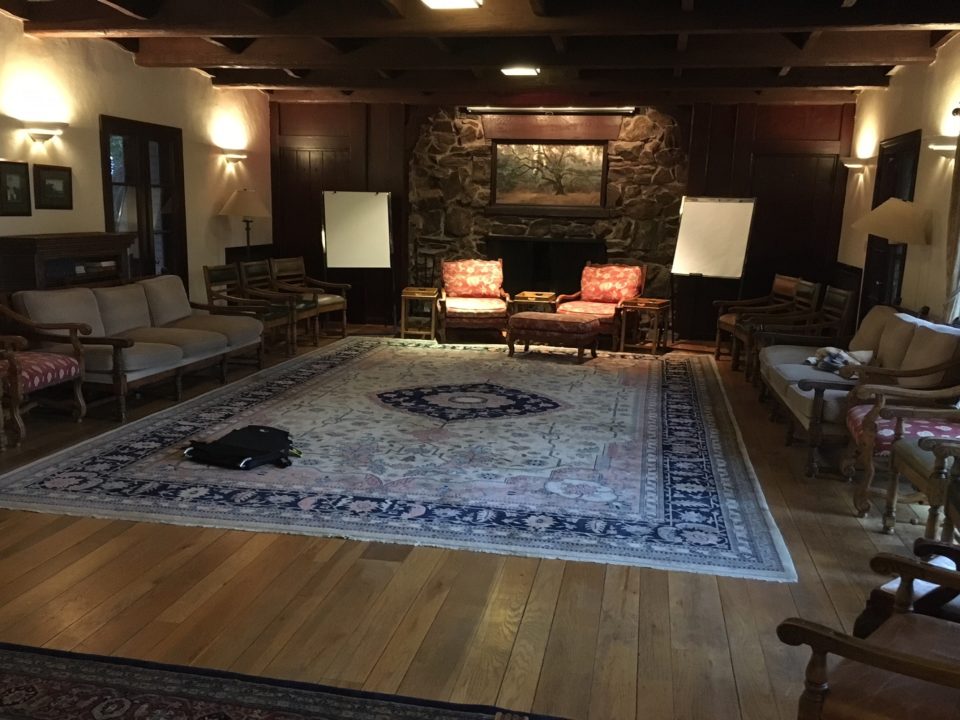Rethinking New Year’s Resolutions

Note to Self: Life Is Easier Than You Think
January 9, 2009
The Map is Not the Territory
January 9, 2009Rethinking New Year’s Resolutions
by Carla Camou and Bob HoffmeyerFirst published in Open Exchange magazine (2001)
How did you do with all those New Year’s resolutions of years gone by? If you are like most people, most of them got left behind around the end of January. Many became no more than a nagging memory until the next New Year rolled around.
If this sounds even a little like you, read on. You’re not wrong, you’re not alone—and you’re certainly not bad.
Resolutions are an interesting process that we put ourselves through. We use special dates to mark times for making major changes in our lives. We start into them with the best of intentions and the greatest hope and it's exhilarating the first few days or weeks when we manage to stick to the change. But then something happens—all at once or little by little—intention wanes and hope fades.
It's not unusual, not even unexpected. We've done it before. The sad part about it all is what we do to ourselves after the resolution is broken. We make some sort of a judgment about how weak or undisciplined we are. We get down on ourselves, we get discouraged and, worst of all, we lose a little faith in ourselves.
Most resolutions are hard to keep not because we lack self-discipline, not because we are weak, and certainly not because we are inherently bad. Most of the time, what makes resolutions hard to keep is how we make them.
A resolution is a decision to change our behavior, to do something different. Resolutions are generally made because we don't like something about ourselves—we want to be different or have a different experience of life in some way. The part of us that doesn't like something and wants to change makes the resolution. The key here is that the part that is responsible for the way we are (indeed, finds value in it) is never consulted. Most often, if that part of us is acknowledged at all, it is blamed, made wrong, and told to get lost. The result is internal conflict.
When there is internal conflict, we have set ourselves against ourselves and, as a result, we have no way to really win. Even if we manage to keep the resolution, the aspect of us that has other ideas still loses and the internal conflict begins to escalate. Eventually, the battle to keep the resolution will wear us down. We won't feel as good inside as we’d hoped we would. It’s about here that we give up.
So, the trick is getting to a solution that doesn't create an internal battle. Neuro-Linguistic Programming (NLP) provides excellent tools for assisting with this process.
Present and future oriented, NLP starts with very positive assumptions about human beings and the behavior they engage in. For example, NLP assumes that people naturally make the best choice available from those they believe to be possible. Given a better choice, people will use it—automatically. Starting from these assumptions, the NLP model has developed into a very rich collection of perceptual and behavioral skills and tools for understanding and changing human behavior. Over the years, it has demonstrated an amazing ability to assist people to make the changes they want and have them last. Some call it magical.
True “re-solution” comes when you get to know yourself well enough that you see how every aspect of you is doing its best to work in your favor. It is when you come to respect all aspects of yourself that lasting change is possible and effortless. When all of you is respected, included, and engaged in contributing to what you truly want, the internal battles and self-sabotaging behavior melt away. Life begins to look more the way you want it to look. You begin to feel whole again—and isn't that really at the heart of any resolution you make?




